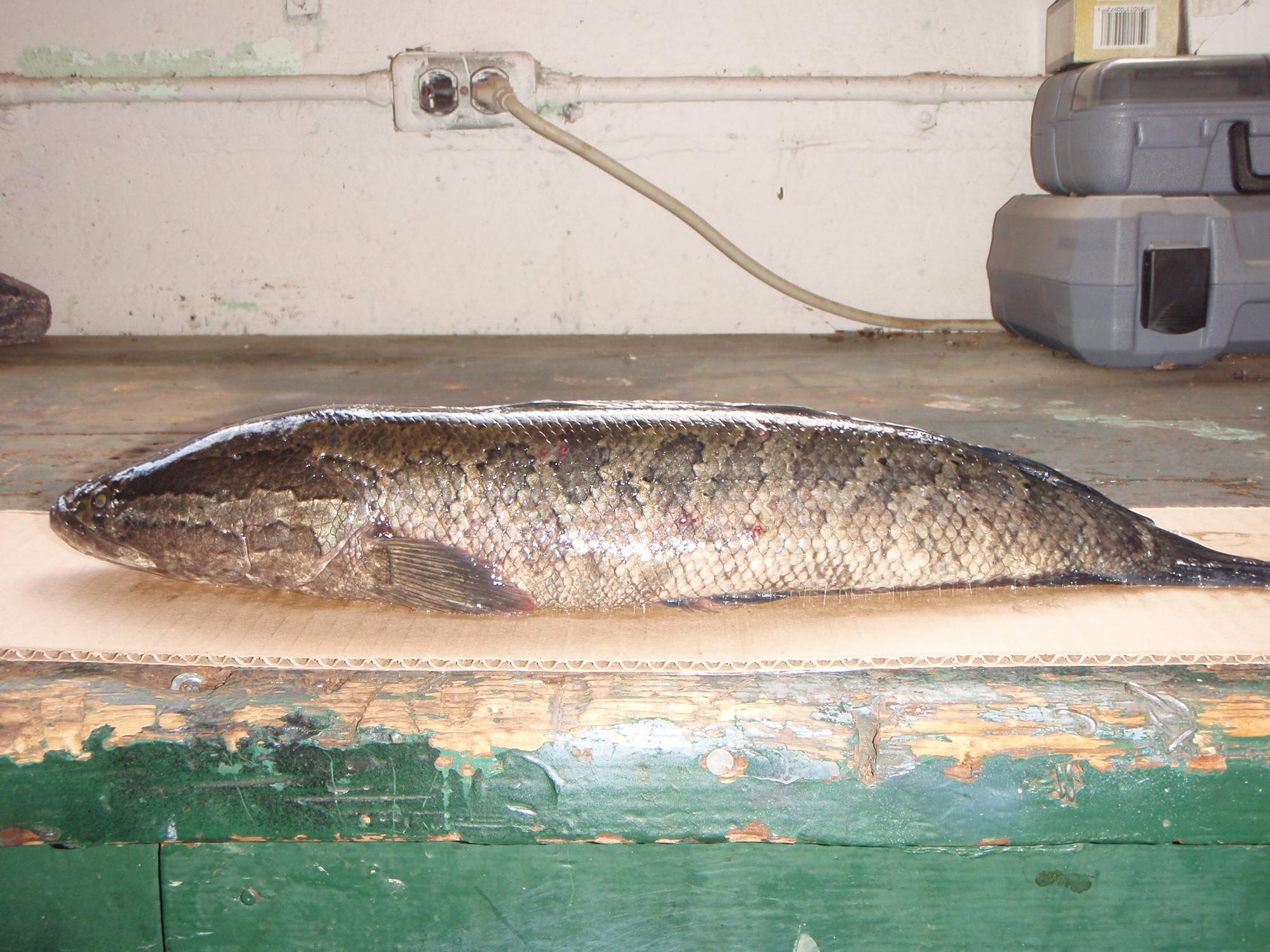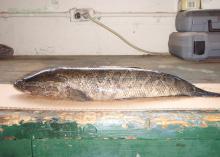Information Possibly Outdated
The information presented on this page was originally released on May 11, 2018. It may not be outdated, but please search our site for more current information. If you plan to quote or reference this information in a publication, please check with the Extension specialist or author before proceeding.
Be alert for invasive northern snakeheads
STARKVILLE, Miss. -- Catching a northern snakehead fish may not seem like such a big deal until you realize that this unique critter is not native to the U.S. and it’s illegal to transport, sell or possess live snakeheads in Mississippi.
Mississippi Department of Wildlife, Fisheries and Parks was notified June 5, 2017, that a northern snakehead was caught in Lake Whittington, an oxbow lake of the Mississippi River in Bolivar County. Officials believe this snakehead traveled to the lake from Arkansas across the Mississippi River during high water levels.
Snakeheads have been reported frequently since 2008 in Arkansas after an accidental release from a commercial fish farm. These fish are native to Russia, Korea and China. In China, they are widely cultured for food and frequently sold in live fish markets. Some believe the snakehead made its way around the U.S. by individuals releasing them from the live food fish or the aquarium fish trade. Established populations have been found in Arkansas, Virginia, New York, Pennsylvania, Maryland, Hawaii, Texas, Florida and a few other states.
Northern snakeheads are similar in appearance to Mississippi’s native bowfin, also known as grinnel. The northern snakehead can reach lengths of about 33 inches and are generally golden tan to a pale brown with dark-brown mottling. Their jaws contain rows of small teeth similar to the pike and pickerel. The fish also have large canines on the lower jaw and palatines, the bones on each side of the palate.
The bowfin grows to an average of 32 inches and has a tan-olive coloring with dark-olive patterning and an identifying black spot at the base of the tail. Its jaws contain peg-like teeth, and its anal fin is short compared to the extended anal fin of the snakehead.
Northern snakeheads are typically found in shallow, backwater areas and can breathe air. This ability allows them to survive for extended periods out of the water by going dormant as long as they are in a moist environment. The fish can wiggle and flop short distances on land in order to find new waters.
Snakeheads’ impact on native fish populations is unknown. Based on experiences in other states, most believe the impact on our native Mississippi populations will be minimal. It is likely that the snakehead will travel to other bodies of water, especially other oxbows connected to the Mississippi River. The fish has a wide tolerance for water temperatures and environmental conditions, so they probably will survive, reproduce and spread. Aquatic insects, catfish, crawfish, frogs, minnows, carp and bream are a large part of the diet for northern snakeheads.
If you catch a northern snakehead, keep it, photograph it, note when and where you caught it, and report it to the Fisheries Bureau of the Mississippi Department of Wildlife, Fisheries and Parks. The fish must not be transported alive.
Contact Wes Neal, fisheries specialist at Mississippi State University Extension Service, for more information.

Editor’s Note: Extension Outdoors is a column authored by several different experts in the Mississippi State University Extension Service.
Released: May 11, 2018
Contacts: Dr. Wes Neal
Select Your County Office
News Story Contact
Your Extension Experts
Related News
March 25, 2025
February 24, 2025
February 24, 2025
February 12, 2025
January 27, 2025
Pages
Related Publications
Publication Number: P3264
Publication Number: P2893
Publication Number: P2625
Publication Number: P3742
Publication Number: P3842






